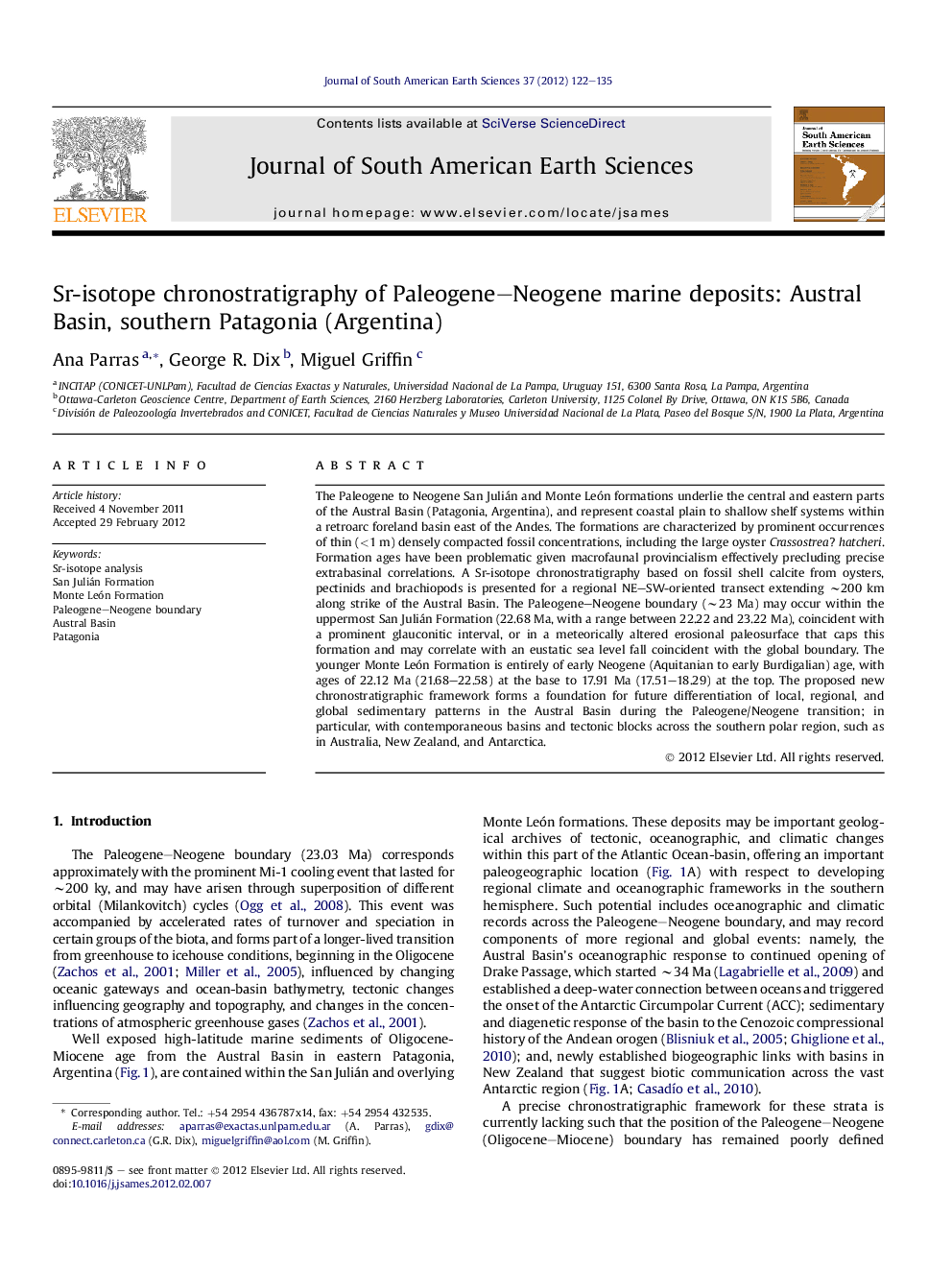| کد مقاله | کد نشریه | سال انتشار | مقاله انگلیسی | نسخه تمام متن |
|---|---|---|---|---|
| 4682545 | 1635172 | 2012 | 14 صفحه PDF | دانلود رایگان |

The Paleogene to Neogene San Julián and Monte León formations underlie the central and eastern parts of the Austral Basin (Patagonia, Argentina), and represent coastal plain to shallow shelf systems within a retroarc foreland basin east of the Andes. The formations are characterized by prominent occurrences of thin (<1 m) densely compacted fossil concentrations, including the large oyster Crassostrea? hatcheri. Formation ages have been problematic given macrofaunal provincialism effectively precluding precise extrabasinal correlations. A Sr-isotope chronostratigraphy based on fossil shell calcite from oysters, pectinids and brachiopods is presented for a regional NE–SW-oriented transect extending ∼200 km along strike of the Austral Basin. The Paleogene–Neogene boundary (∼23 Ma) may occur within the uppermost San Julián Formation (22.68 Ma, with a range between 22.22 and 23.22 Ma), coincident with a prominent glauconitic interval, or in a meteorically altered erosional paleosurface that caps this formation and may correlate with an eustatic sea level fall coincident with the global boundary. The younger Monte León Formation is entirely of early Neogene (Aquitanian to early Burdigalian) age, with ages of 22.12 Ma (21.68–22.58) at the base to 17.91 Ma (17.51–18.29) at the top. The proposed new chronostratigraphic framework forms a foundation for future differentiation of local, regional, and global sedimentary patterns in the Austral Basin during the Paleogene/Neogene transition; in particular, with contemporaneous basins and tectonic blocks across the southern polar region, such as in Australia, New Zealand, and Antarctica.
► New chronostratigraphic framework for the Patagonian Oligocene-Miocene succession is presented.
► The San Julián Formation is late Chattian (late Paleogene), spanning ∼25 to 23 Ma.
► The Monte León Formation is Aquitanian to early Burdigalian (early Neogene), spanning ∼22 to 18 Ma.
► Location of the Paleogene/Neogene boundary in Patagonia sedimentary rocks is discussed.
► Chronostratigraphic framework forms a foundation for correlation with contemporaneous basins.
Journal: Journal of South American Earth Sciences - Volume 37, August 2012, Pages 122–135